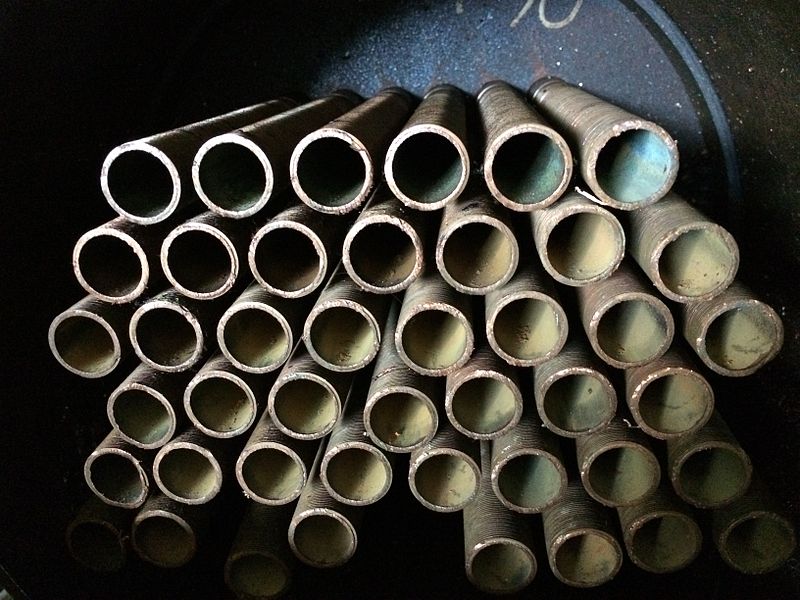Quick Inquiry
Heat exchanger is a system utilized for transferring heat from one medium to another for both cooling and heating processes. This system is widely used in air conditioning, refrigeration, chemical plants, power stations, sewage treatments, etc. However, the term heat exchanger is mostly used when we talk about plate heat exchangers or shell and tube heat exchangers.
When we keep a check on the performance and behavior of the heat exchangers, operating failures can be predicted and prevented. Hence, fatigue analysis, measuring the thermal, and mechanical cyclic loads, are crucial segments of heat exchangers.
High thermal efficiency, ability to withstand high pressure, and compact size keep plate-and-shell heat exchanger tubes very much in demand. But these also make them sensitive to material fatigue. Having a critical process, heat exchanges should be capable enough to handle fatigue problems. However, the designs of most of the conventional unit heat exchangers tend to create gratuitous problems and equipment breakdown.
One of the most typical reasons for mechanical structures failing is material fatigue. It occurs when a machine part is exposed to loads that change with the change in temperature over time. This causes the machine part to break.
Such failures are sudden with no prior warning signs or indications. Therefore, it is not easy to predict metal fatigue which may result in serious damage or accidents. A very good example here can be railroad axels. Due to their rotations, they can be subjected to cyclic loads. The axel can break suddenly without warning due to the stress acting on it.
The starting point for fatigue failures is small cracks caused due to undercuts, surface cracks, pores, etc. Stress concentrations also lead to fatigue cracks. Welding techniques used for materials also decrease fatigue resistance in them.

Let us check how the fatigue problems can be avoided with the help of great designs and changes in manufacturing practices.
Examining the entire heat exchanger process and optimizing it based on fatigue-related issues is the most efficient way to reduce fatigue problems. Check if the particular heat exchanger is designed to withstand fatigue. If not, a few changes in it can have a great influence on fatigue resistance.
When we talk about the popularity of plate-and-shell heat exchangers, we cannot deny that they have poor fatigue resistance capacity. Credit goes to the design. Specific faults in the design are – the conventional plate pattern, less mechanical strength, and inferior welding techniques/quality. Overcoming these problems can enhance fatigue resistance in heat exchangers.
The Conventional Plate Pattern
Extra stress is caused due to the corrugation pattern because of the conventional plate leading to fatigue failure. To avoid this, a new plate pattern with equal thermal expansion and mechanical strength should be created keeping both identical in all directions. This can be possible if the plate comprises of distributed bumps and depressions. Such design change can enhance fatigue resistance as it would reduce the stress concentrations drastically.
Less Mechanical Strength
A little change in the strengthening of the plate can reduce fatigue problems. This can be done by running the inlet and outlet tubes through the entire heat exchangers instead of aborting them at the end of the plate pack. Moreover, to reduce the stress, only the think end covers of the tubes should be welded.
Welding Quality
Inferior welding quality leading to cracks can cause fatigue problems. Laser welding is definitely one of the best ways to help in fatigue resistance.
Changes in the temperature can cause cyclic thermal stress leading to thermal fatigue. It can be also caused due to repeated thermal cycling in shell and tube heat exchangers. This results in cracking of the tubes which can completely cleave them if not addressed soon. Stress definitely reduces fatigue resistance in heat exchanger tubes.
Fabrication and reduced amount of stress in heat exchanger tubes are important to avoid fatigue. Stainless steel fabrication is able to handle higher velocities as compared to others. The number of heat exchangers in industrial enterprises has greatly increased in most of the middle east countries as well. Egypt, Qatar, Oman, Saudi Arabia, UAE are to name a few. Technology plays an important role for them making necessary changes especially when it comes to fatigue resistance.
As a leading heat exchanger manufacturer in India, we have the knowledge and expertise to help you when it comes to heat transfer application. For more information about our heat exchanger tubes, please call us at +91-9909232552. You could also fill out our online form to submit a quick inquiry.
lATEST BLOG |
|
Finned Tube Heat Exchanger Selection Guide for Rice Mills, Dairy and Food Plants in India
A finned tube heat exchanger is one of the most im |
|
Why Cold-Drawn Tubes Are the Best Choice for Aerospace Component Manufacturing
When it comes to aerospace manufacturing, the sele |
|
How Seamless Steel Pipes Ensure Safety in High‑Pressure Boiler Systems
When it comes to ensuring the safe operation of hi |
|
Why Seamless Tubes and Pipes Are Gaining Popularity in Heavy-Duty Industries
In the world of heavy-duty industries, where high |
|
How Finned Tubes Help Combat Fouling in Heat Exchangers: Solutions for Clean Heat Transfer
Heat exchangers are the heart of many industrial s |

